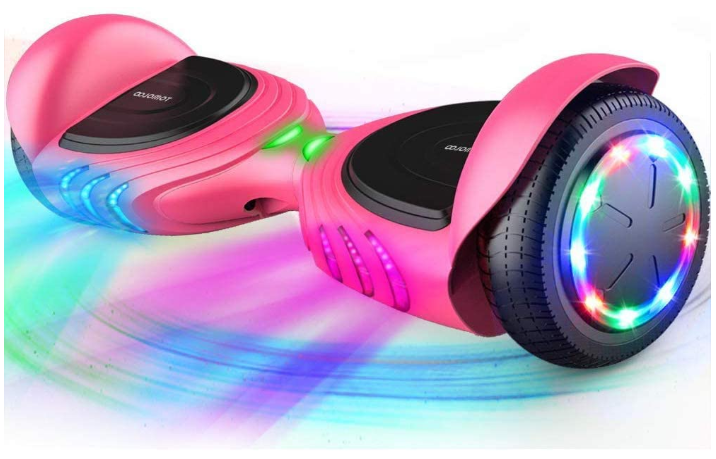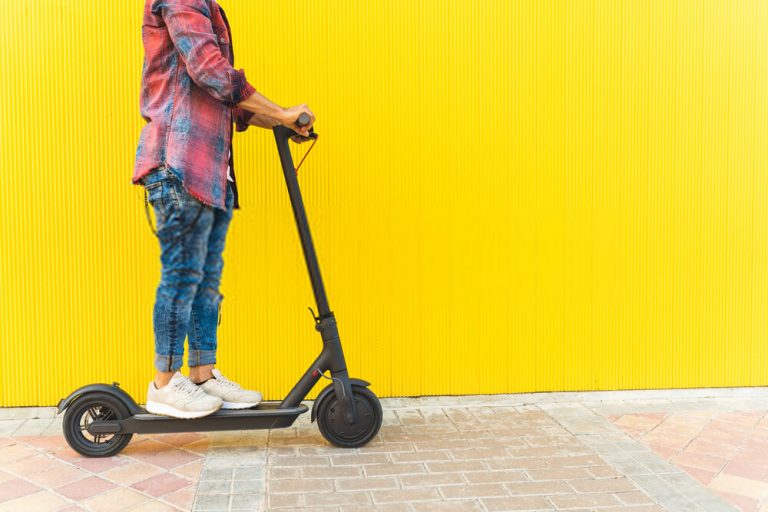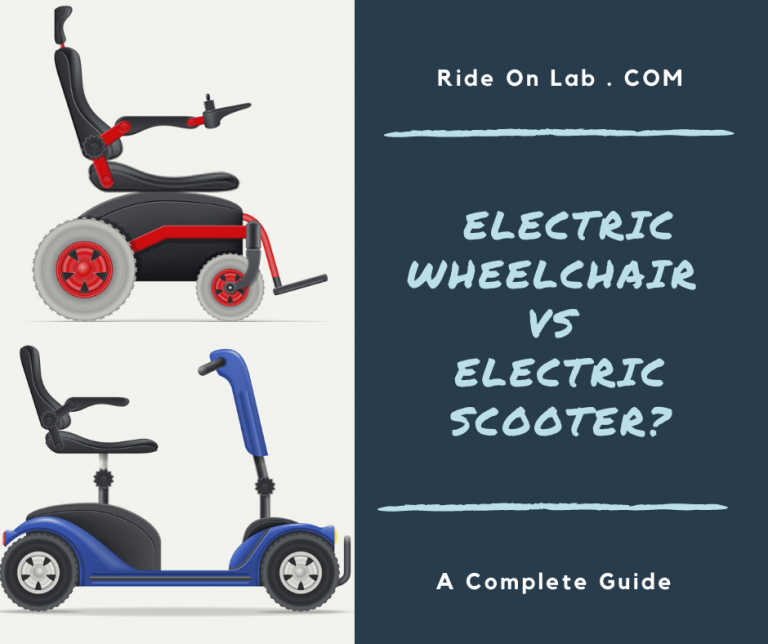When Were Hoverboards Invented?
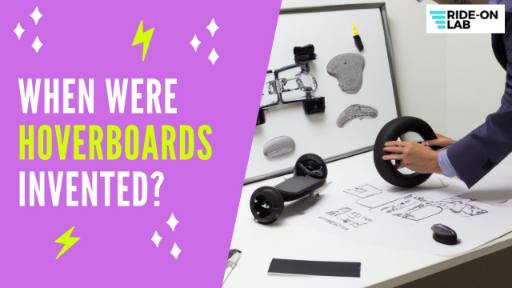
Hoverboards, also known as self-balancing scooters, have become a sensation in recent years.
They are two-wheeled, battery-powered boards that allow you to glide around effortlessly.
The popularity of hoverboards has skyrocketed. According to precedenceresearch.com, it is expected to exceed the market size of US$ 1,300 million by 2030 (with a CAGR of 6%), making them a must-have item for tech enthusiasts and thrill-seekers alike.
But do you know when were Hoverboards invented?
The exact hoverboard’s invention date is unclear, but the first hoverboard design was patented in the early 1990s by Dean Kamen. Whereas, the original design of most types of hoverboards we see today was patented by Shane Chen and was introduced by his company, Hovertrax, in 2013.
The invention of hoverboards was a significant milestone in personal transportation, offering a fun and efficient way to move around.
Over the years, these self-balancing hoverboard scooters have evolved from simple, two-wheeled devices to more advanced, feature-rich models.
Today, hoverboards are enjoyed by people of all ages and have become a common sight on sidewalks and parks worldwide.
So, if you want to explore the history of self-balancing scooters and delve into the significance of their invention, continue reading!
Contents
What is a Hoverboard?
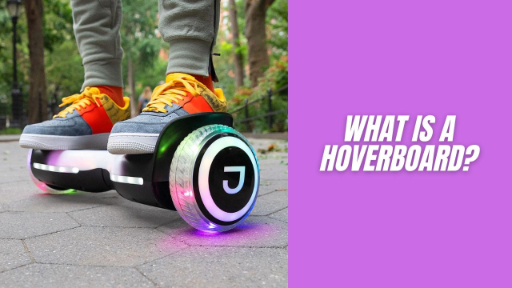
A hoverboard, also known as a self-balancing scooter, is a two-wheeled, battery-powered personal transportation device.
It uses gyroscopic stabilization technology to balance the rider and can be controlled by leaning forward or backward.
The rider stands on two pads, one on either side of the board, and moves in the desired direction by shifting their weight.
Self-balancing scooters have become a popular mode of transportation for short distances and are often used for leisure activities.
How Does A Hoverboard Works?
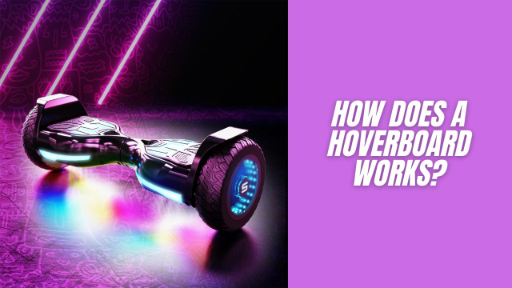
A hoverboard uses gyroscopic stabilization technology, which uses sensors and motors to keep the device balanced.
The device has two wheels, a platform for the rider to stand on, and a set of sensors and control boards.
When the rider leans forward, the sensors detect the change in balance and signal the motors to adjust the wheel rotation speed to keep the device level.
The motors rotate the wheels in the direction the rider wants to move, propelling the device forward.
In addition to the gyroscopic stabilization technology, self-balancing scooters also use a lithium-ion battery to power the motors and control boards.
The battery provides the energy needed to maintain balance and move the device. When the battery is depleted, the rider must recharge the device before they can use it again.
Overall, a hoverboard works by constantly monitoring the rider’s movements and adjusting the wheel speed to maintain balance.
This allows the rider to control the device and move in any direction they choose simply by shifting their weight.
What Can You Do With A Hoverboard?

A hoverboard is a personal transportation device that allows you to glide around effortlessly. With a self-balancing scooter, you can:
- Commute to work or school: A hoverboard can be used as an alternative to walking, biking, or driving for short distances.
- Enjoy leisure activities: Many people enjoy using the self-balancing scooter for recreational purposes, such as cruising through parks or neighborhood sidewalks.
- Perform tricks: Some hoverboard enthusiasts enjoy performing tricks and stunts on their devices, such as spins and jump.
- Explore new places: A self-balancing scooter can explore new places, such as beaches, lakes, or outdoor trails.
- Save time and energy: A hoverboard can be a more efficient way to get from one place to another, saving you time and energy compared to walking or cycling.
Overall, a self-balancing scooter offers a fun and convenient way to move around, whether for commuting, leisure, or exploration.
The History of Hoverboards
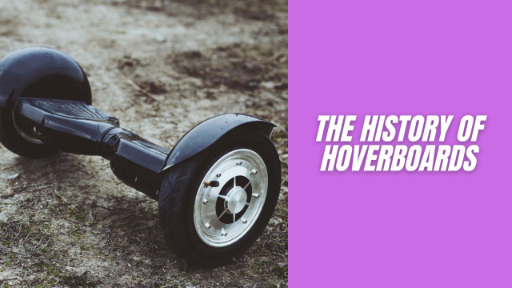
· Early attempts to invent hoverboards
Inventor Dean Kamen created the first patented hoverboard design in the early 1990s, but it was much different than the hoverboards we know today.
Kamen’s hoverboard, called the “Segway,” was a two-wheeled self-balancing scooter powered by electricity and designed for personal transportation.
These early prototypes used gyroscopic stabilization technology to maintain balance, but they were limited in their capabilities and range.
· The First Successful Hoverboard
The first successful hoverboard, as we know them today, with two wheels and a self-balancing mechanism, appeared on the market in the early 2010s.
In 2013, a US-Chinese entrepreneur, Shane Chen, patented the first commercially successful hoverboard, also known as a two-wheeled self-balancing scooter.
This device used a combination of gyroscopic stabilization technology, sensors, and motors to maintain balance and move the rider.
The device was an instant hit when launched under the brand name Hovertrax, with people worldwide clamoring to get their hands on one.
Some interesting facts about the hoverboard:
- The hoverboard concept first appeared in the popular 1989 film “Back to the Future Part II.” However, the idea of a levitating board dates back much earlier, with fictional depictions of hoverboards appearing in various forms of media as far back as the 1950s.
- Over the years, hoverboards have evolved and become more compact, with improved performance, speed, and range and additional features such as Bluetooth connectivity, LED lights, and more.
· Evolution of Hoverboard Technology
Since the introduction of the first successful Hovertrax hoverboard in 2013, the technology has continued to evolve.
New models have been introduced that feature larger wheels, improved balancing systems, and more powerful motors.
Some hoverboards now also include features such as Bluetooth connectivity, LED lights, and even built-in speakers.
Today, hoverboards, or self-balancing scooters, have become a popular mode of transportation for short distances and are often used for leisure activities.
The evolution of hoverboard technology has marked a significant milestone in the world of personal transportation, providing a fun and convenient way to move around.
From their early beginnings to the advanced technology used today, hoverboards have come a long way and continue to evolve, offering riders an exciting and innovative way to get from one place to another.
Evolution of Segway self-balancing Scooters
As mentioned earlier, the Deam Kamen was the first one to invent and patent the hoverboard design.
His invention now has its own premium class, separate from most hoverboards we see today, and its evolution is also worth mentioning.
The Segway self-balancing scooter was first introduced in 2001. It was a two-wheeled, self-balancing scooter that was powered by electricity and designed for personal transportation.
Over the years, the Segway has evolved and has been improved in several ways:
- Design: The original Segway design was bulky and not very portable, but subsequent versions of the Segway have become premium, durable, smaller, lighter, and more compact, making them more convenient for personal transportation.
- Features: Segways now come with additional features such as LED lights, built-in speakers, Bluetooth connectivity, App support, remote controller, auto-follow mode, Ninebot Gokart, and Ninebot MechaKit compatibility, making them more versatile and user-friendly.
- Performance: Segways have become faster, with longer ranges and improved stability. The latest models can reach speeds of up to 15 mph and can travel distances of up to 35 miles on a single charge.
- Safety: Safety concerns regarding the original Segway have been addressed with improved battery technology and other safety features, making them safer and more reliable for riders.
Overall, the Segway has come a long way since its original introduction in 2001 and continues to evolve and improve in a much better way than other hoverboards, providing riders with a safe, convenient, fun, and premium-quality personal transportation experience.
The Future of Hoverboards
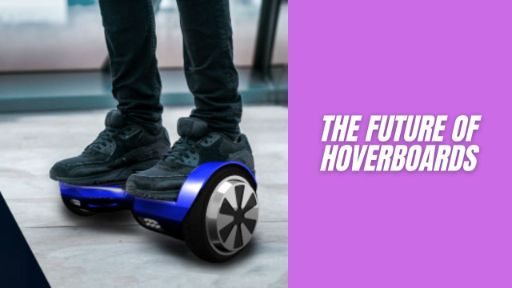
· Advancements in Hoverboard Technology
Hoverboard technology has come a long way since its inception, and the future looks bright for this innovative mode of transportation.
With advancements in sensors, batteries, and motors, hoverboards are becoming more powerful and reliable.
In addition, the development of new materials and manufacturing techniques is helping to make hoverboards lighter, more durable, and more affordable.
· Potential for Future Developments
The potential for future developments in hoverboard technology is exciting. From the integration of artificial intelligence to the development of new balancing systems, the possibilities are endless.
As technology continues to advance, hoverboards have the potential to become even more advanced and capable, offering riders a more convenient and enjoyable mode of transportation.
· Possibility of Hoverboards Becoming a Mainstream Mode of Transportation
The possibility of hoverboards becoming a mainstream mode of transportation is not far-fetched.
As technology continues to evolve and improve, more and more people are likely to adopt hoverboards as a regular mode of transportation for short distances.
With their compact size and ability to maneuver in tight spaces, hoverboards have the potential to revolutionize the way people think about personal transportation.
Overall, the future of hoverboards is bright and full of possibilities.
With advancements in technology and the potential for future developments, hoverboards have the potential to become a mainstream mode of transportation and continue to change the way people move about the world.
Certifications for Hoverboards

· Importance of certifications for hoverboards
Certifications for a self-balancing scooter are important for ensuring the safety of riders and the quality of the product.
These certifications help to guarantee that hoverboards meet certain safety standards and are free from defects and malfunctions.
· Common certifications for hoverboards
There are several common certifications that self-balancing scooters must pass to be considered safe and reliable.
Some of the most well-known certifications include UL 2272, which tests hoverboards for fire and electrical safety, and CE, which certifies that hoverboards meet European safety standards.
Other certifications, such as FCC and RoHS, test for specific safety and environmental standards.
· Choosing a certified hoverboard
When choosing a hoverboard, it is important to look for certifications that ensure the safety and quality of the product.
Make sure that the self-balancing scooter you choose is certified by a reputable organization, such as UL or CE, and has passed the necessary safety tests.
This will help to ensure that you have a safe and enjoyable experience while riding your hoverboard.
Certifications for hoverboards play an important role in ensuring the safety and quality of these innovative modes of transportation.
By choosing a self-balancing scooter that is certified by a reputable organization, riders can have peace of mind knowing that they are riding a safe and reliable product.
In Conclusion,
Hoverboards, also known as self-balancing scooters, have come a long way since their invention.
From their early beginnings to the advanced technology used today, hoverboards have played a significant role in the evolution of personal transportation.
The history of hoverboards is marked by the contributions of inventors and key contributors who have helped to shape the industry and make hoverboards the innovative and exciting mode of transportation that they are today.
Explore More on Hoverboards:
- How to Prevent Hoverboard from Exploding?
- How To Maintain Your Hoverboard?
- How to Know Which Hoverboard to Buy? – Buying Guide
- How Long Does It Take for a Hoverboard to Charge?
- How to Connect Hoverboard to Bluetooth? – A Step By Step Guide
- How to Calibrate a Hoverboard – A Step By Step Guide
- How Much Does a Hoverboard Weigh?

